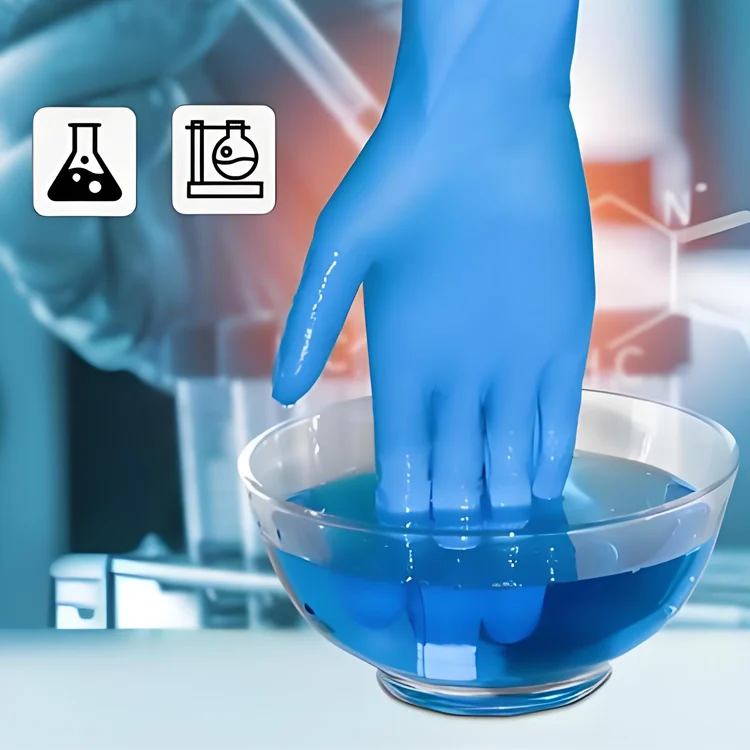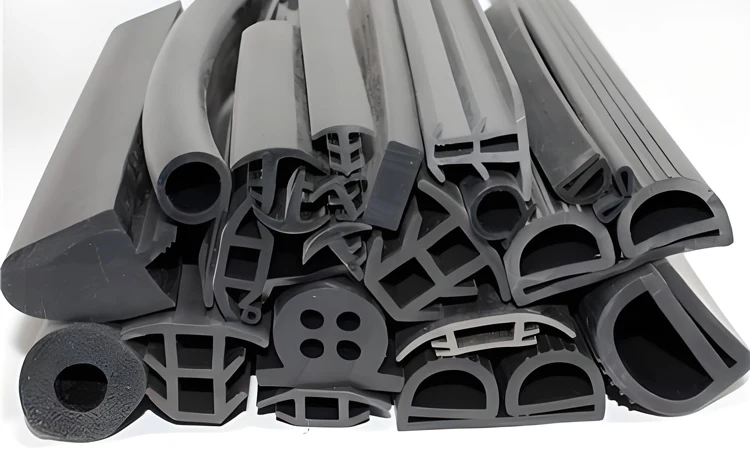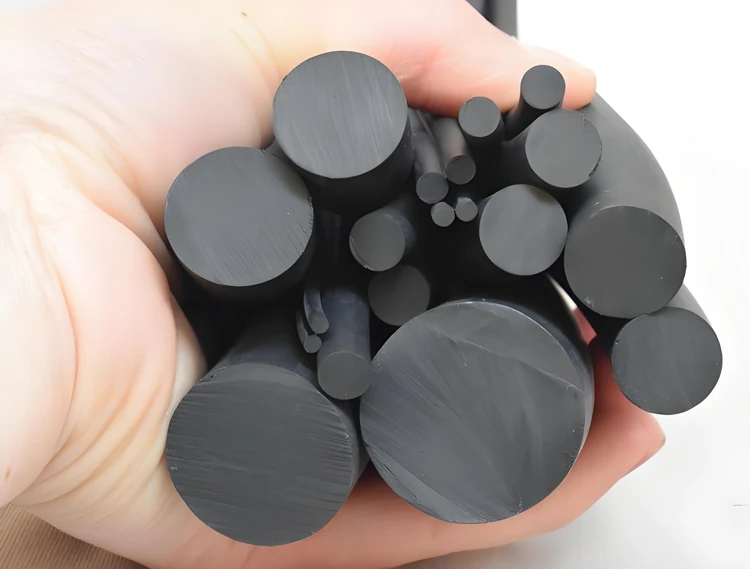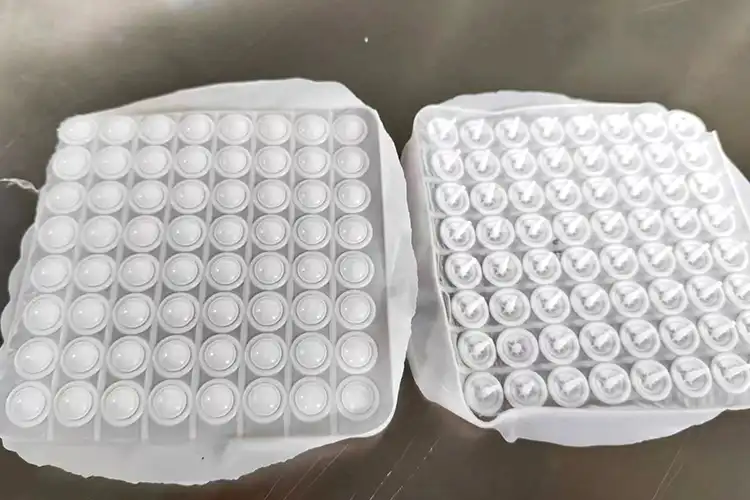I. Introduction: Why Rubber’s Environmental Resistance Matters
When I first started working with rubber components, I assumed they were all built to last—until I witnessed a cable jacket disintegrate in less than six months under tropical sunlight. The truth is, rubber is extremely vulnerable to environmental stresses if the wrong type is used.
Whether you’re designing seals for chemical plants, cables for coastal installations, or gaskets for high-temperature machinery, choosing the right rubber is not just a technical decision—it’s a safeguard against failure.
Let me give you a few real-world examples:
- In the chemical industry, rubber hoses often come into contact with corrosive acids and oils. A material like natural rubber would swell or degrade quickly.
- Near the sea, constant moisture and salt exposure wreak havoc on standard rubber components, leading to mold growth and swelling.
- In outdoor electrical systems, UV rays crack and embrittle rubber insulation unless it’s properly formulated.
- Under extreme heat, like in engine compartments, ordinary rubber simply melts, hardens, or loses its flexibility.
These aren’t rare edge cases. They’re daily challenges for engineers, buyers, and product designers working in construction, manufacturing, automotive, and electronics.
That’s why understanding rubber’s environmental resistance is critical.
In this article, I’ll walk you through:
- What it truly means for rubber to resist chemicals, moisture, UV, and temperature
- Which rubber types excel under these conditions
- Practical selection advice for different applications
- A side-by-side performance comparison table for quick reference
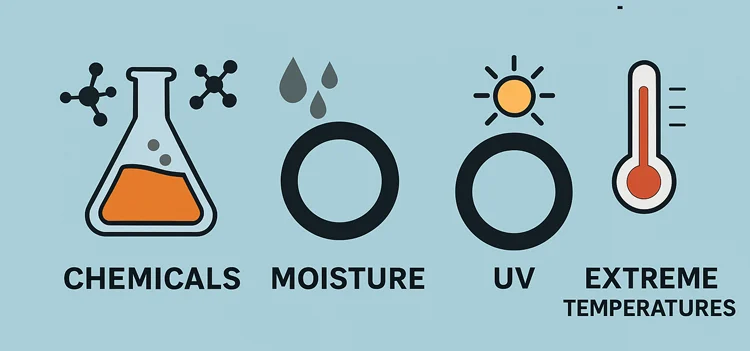
Let’s start by decoding what each of these “resistance” terms really involves.
II. Key Performance Breakdown: Defining the “Big Four” Resistances
If you’re in charge of selecting rubber for any critical application, you need more than just generic terms like “durable” or “weatherproof.” You need clarity. In my experience, the following four resistances are what truly define whether a rubber material will last—or fail—in harsh environments:
1. Chemical Resistance
Chemical resistance refers to a rubber’s ability to withstand attack or degradation when exposed to acids, bases, oils, fuels, or solvents. This isn’t just about surface damage—it includes swelling, cracking, softening, or total loss of integrity.
Key Tip: Not all rubber reacts the same way to all chemicals. For example, silicone resists many alcohols but breaks down in mineral oils. Always match the rubber to the specific chemicals in your environment.
“There’s no such thing as universally chemical-resistant rubber—only rubber resistant to your chemicals.”
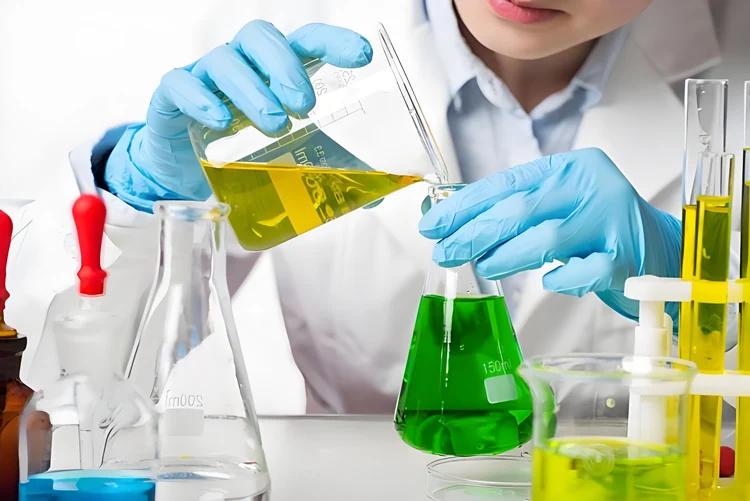
2. Moisture Resistance
This refers to a rubber’s capacity to avoid absorbing water or moisture from the air. When rubber absorbs water, it can swell, lose flexibility, or facilitate microbial growth. In humid environments or underwater applications, this can be a silent killer.
Hydrophobicity and low water absorption rate are key indicators. EPDM and silicone are known for exceptional moisture resistance, making them popular for roofing, sealing, and insulation.
3. UV Resistance
Ultraviolet rays from sunlight can break molecular bonds in rubber, leading to surface chalking, cracking, discoloration, and loss of mechanical properties.
Signs of poor UV resistance:
- Cracking or powdering on the surface
- Loss of elasticity
- Brittleness and breakage under bending
Materials like EPDM, silicone, and CR (neoprene) have superior UV resistance due to their saturated polymer backbones or protective fillers.

4. Extreme Temperature Resistance
Whether you’re facing high heat (above 150°C) or cold below freezing (-40°C), the wrong rubber will stiffen, melt, or shrink—leading to catastrophic leaks or mechanical failure.
What to look for:
- A wide service temperature range
- Ability to maintain elasticity and sealing force at both ends of the spectrum
- Thermal aging stability for prolonged exposure
Silicone and fluororubber (FKM) excel in this area, maintaining flexibility and performance from subzero to over 200°C.
Each of these resistances addresses a different environmental threat. In the next section, I’ll show you which rubber materials actually deliver on these fronts—and how they stack up in real-life use.
III. Top Rubber Materials for Harsh Environments
After testing dozens of formulations and working with clients across industries—from aerospace to construction—I’ve found that the following five rubber materials consistently stand out for their environmental resistance. Each comes with strengths, limitations, and specific use cases. Let’s dive in.
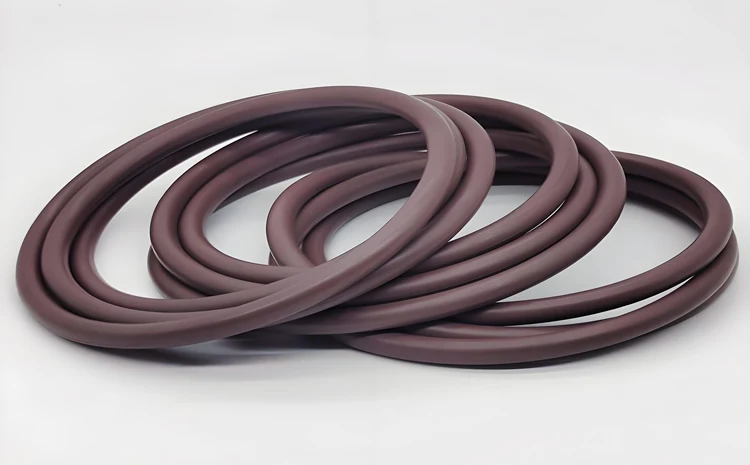
1. Fluoroelastomer (FKM)
If your application involves aggressive chemicals or high temperatures, FKM is a top-tier choice.
- Chemical Resistance: Exceptional. Resists fuels, oils, acids, and many solvents.
- Temperature Range: -20°C to +250°C
- UV and Weather Resistance: Strong resistance to aging and ozone.
- Moisture Resistance: Moderate, but generally stable unless submerged.
- Typical Applications: Aerospace seals, chemical hose linings, automotive fuel system gaskets.
Key Insight: FKM is expensive, but when failure is not an option—especially with exposure to hydrocarbons—it’s worth every cent.
2. Ethylene Propylene Diene Monomer (EPDM)
EPDM is my go-to material for outdoor and moisture-sensitive applications.
- Moisture Resistance: Outstanding—virtually no water absorption.
- UV Resistance: Excellent for long-term outdoor use.
- Chemical Resistance: Good against water-based acids and alkalis, but not suitable for oil or fuel.
- Temperature Range: -50°C to +150°C
- Typical Applications: Rooftop gaskets, cable jacketing, automotive weather seals.
Cost-effective and durable, EPDM is ideal where oil resistance isn’t a requirement.
![]()
3. Silicone Rubber
Silicone combines unmatched thermal stability with flexibility, making it a favorite in electronics and food-grade applications.
- Temperature Resistance: Exceptional. Functions from -60°C to +230°C without losing elasticity.
- UV and Moisture Resistance: Excellent. Maintains color and integrity outdoors.
- Chemical Resistance: Weak against oil and fuel-based solvents.
- Typical Applications: High-temp oven seals, outdoor LED lighting seals, medical tubing.
Note: Despite its premium performance in heat and UV, avoid using silicone with petroleum-based fluids.
4. Hydrogenated Nitrile Butadiene Rubber (HNBR)
Think of HNBR as a tougher, heat- and ozone-resistant version of standard nitrile rubber.
- Chemical Resistance: Strong. Withstands oils, fuels, and many coolants.
- Temperature Range: -30°C to +150°C
- UV and Moisture Resistance: Moderate to good.
- Typical Applications: Automotive engine gaskets, oil-resistant industrial seals.
Best used where oil resistance and mechanical strength are critical under heat.
5. Chloroprene Rubber (CR or Neoprene)
CR is a versatile performer in outdoor and general industrial settings.
- UV and Weather Resistance: Good. Withstands sun, ozone, and weathering.
- Moisture Resistance: High. Common in marine and underwater uses.
- Chemical Resistance: Moderate—handles weak acids and oils reasonably well.
- Temperature Range: -40°C to +120°C
- Typical Applications: Outdoor hoses, diving suits, cable jackets.
CR strikes a balance between affordability and all-round durability.
Each rubber has its own “superpower,” and the trick is aligning that strength with your real-world application. In the next section, I’ll break it down by working environment so you can match materials with conditions more confidently.
IV. Material Selection Guide by Environmental Condition
Selecting the right rubber isn’t just about knowing the material’s features—it’s about aligning those features with the exact conditions your product will face. Here’s how I typically match rubber types to the environment, based on real-world projects and failure reports I’ve encountered.
1. Chemical Corrosion Environments
In chemical plants, laboratories, or fuel systems, rubber is constantly in contact with aggressive substances.
Recommended Materials:
- Fluoroelastomer (FKM): Best for organic solvents, fuels, and strong acids.
- HNBR: Good for oils, fuels, and coolant fluids with added durability.
Selection Tips:
- Identify the exact chemical exposure (type, concentration, and duration).
- Test for swelling, brittleness, and strength retention under repeated contact.
Failure Alert: One client used EPDM for a fuel hose—within weeks, it swelled and cracked. Always check chemical compatibility charts before specifying rubber.
2. High Humidity & Strong UV Exposure
Outdoor installations like solar equipment, cable jackets, roofing, and marine components are constantly exposed to moisture and sunlight.
Recommended Materials:
- EPDM: Outstanding performance against UV and humidity.
- Chloroprene Rubber (CR): Resilient in marine and high-humidity environments.
- Silicone: Best where UV stability and high temp co-exist.
Selection Tips:
- Opt for saturated polymer rubbers for longer outdoor life.
- Watch for added stabilizers or UV-resistant formulations in the spec sheet.
Design Tip: For electric enclosure gaskets exposed to the sun, I always recommend EPDM over natural rubber due to its long-term stability.
3. Extremely High or Low Temperature Conditions
Extreme temperatures are common in engines, ovens, refrigeration, and outdoor winter equipment.
Recommended Materials:
- Silicone: Excellent in both cryogenic and high-heat environments.
- FKM: Ideal for continuous high-temperature applications with chemical exposure.
Selection Tips:
- Look at both operating and peak temperatures.
- Check if the rubber retains compression set and elasticity after thermal aging.
Pro Insight: For freezer seals in commercial kitchens, silicone outperforms EPDM by staying flexible down to -60°C without cracking.
In short, don’t let a single strength mislead your decision—each environment requires a balanced look at multiple resistance properties. In the next section, I’ll summarize everything in a clear comparison table for quick reference.
V. Performance Comparison Table
To help you compare at a glance, I’ve compiled the essential performance metrics of the five rubber types we’ve discussed. Whether you’re sourcing materials for outdoor gaskets or chemical hoses, this table gives you a fast, practical overview.
| Rubber Type | Chemical Resistance | Moisture Resistance | UV Resistance | Temperature Range | Typical Applications |
|---|---|---|---|---|---|
| FKM (Viton) | ★★★★★ (Excellent) | ★★★☆☆ (Moderate) | ★★★★☆ (Strong) | -20°C to +250°C | Fuel system gaskets, chemical seals |
| EPDM | ★★★☆☆ (Moderate) | ★★★★★ (Excellent) | ★★★★★ (Excellent) | -50°C to +150°C | Weather seals, roofing, cable jacketing |
| Silicone | ★★☆☆☆ (Weak) | ★★★★☆ (Strong) | ★★★★★ (Excellent) | -60°C to +230°C | High-temp seals, medical, outdoor use |
| HNBR | ★★★★☆ (Strong) | ★★★☆☆ (Moderate) | ★★★☆☆ (Moderate) | -30°C to +150°C | Engine seals, fuel hoses, industrial use |
| CR (Neoprene) | ★★★☆☆ (Moderate) | ★★★★☆ (Strong) | ★★★★☆ (Strong) | -40°C to +120°C | Outdoor hoses, diving suits, cable wraps |
Legend:
★★★★★ = Excellent ★★★★☆ = Strong ★★★☆☆ = Moderate ★★☆☆☆ = Weak
This table is the tool I wish I had earlier in my career—especially when evaluating supplier catalogs or comparing material datasheets. But while tables are helpful, don’t make final decisions without considering your specific working environment.
VI. Conclusion: How to Choose Smart and Avoid Rubber Failures
After years of working with rubber across industries—from automotive sealing systems to outdoor electronics—I’ve learned one golden rule:
Never choose rubber based on a single property.
I’ve seen too many projects fail because a team prioritized one feature (like heat resistance) while overlooking another (like chemical compatibility). For instance, silicone might handle scorching temperatures, but put it in a fuel system and it will swell and degrade. On the flip side, FKM resists nearly all chemicals but comes with a higher price and limited low-temperature performance.
Here’s how I approach rubber selection the right way:
- Build a checklist before sourcing:
- What chemicals will the rubber touch?
- Is it exposed to water, humidity, or submerged?
- Will it be outdoors, under sunlight, or in ozone-rich air?
- What are the maximum and minimum service temperatures?
- Cross-reference with verified performance data:
Use technical datasheets from trusted manufacturers (like ASTM D2000 or ISO standards) and always check compatibility charts for chemical exposure. - Request samples for testing when in doubt:
Simulate your real working conditions with test coupons before scaling up. Some failures only show after 1,000 hours—not in the first 10. - Partner with experienced suppliers:
A good supplier doesn’t just sell rubber—they help you solve problems. At KINSOE, for example, we help clients customize formulas and select the right compounds for their exact environment.
Bottom Line:
Don’t treat rubber selection as an afterthought. When properly chosen, the right rubber compound protects your system, ensures long service life, and reduces maintenance costs.
Still unsure which rubber is best for your application? Reach out to your rubber supplier with your full environmental conditions—or contact us at KINSOE, and I’ll personally help guide your decision.
References:

